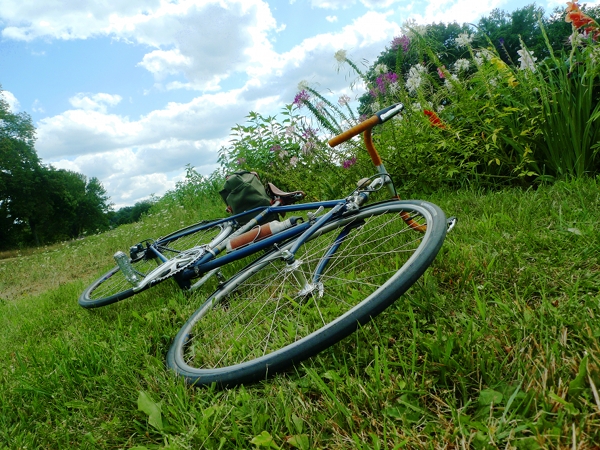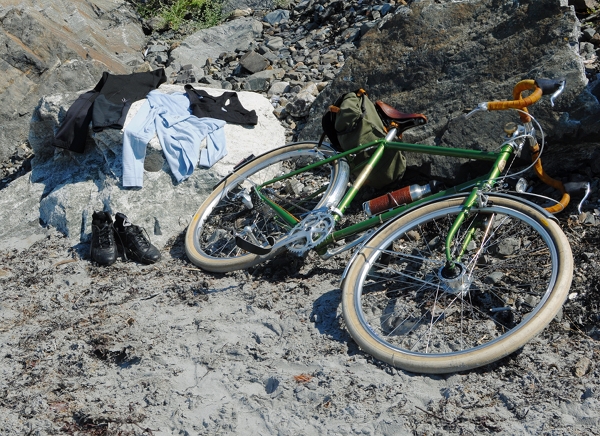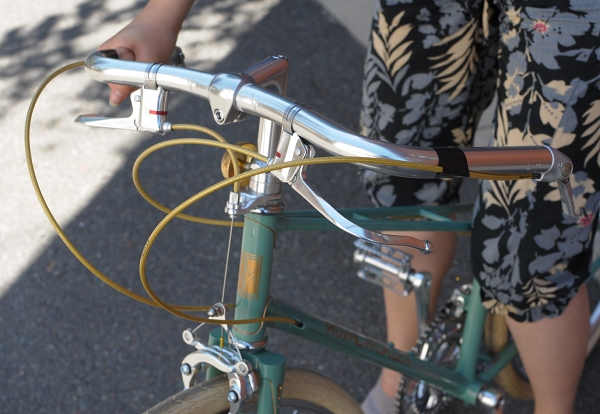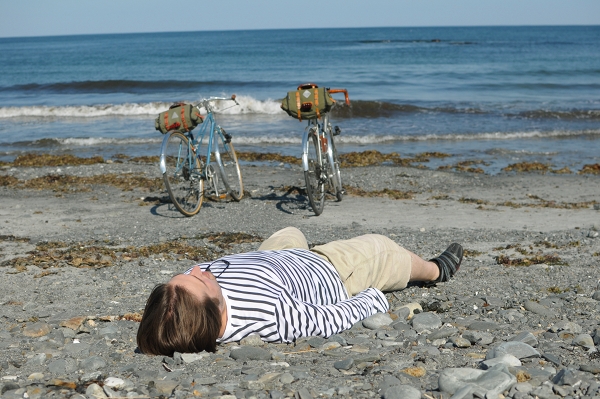Though not all will agree with this, I believe that in order to honestly say that you are able to cycle a given distance, it has to mean that you are able to do it successfully. In other words, if you managed to complete a long ride, but could not walk the next day as a result, that does not count as "success"!
I consider my first half-century (50 mile) ride to have happened this summer - despite having once cycled that distance in Austria some time ago. That earlier trip was a disaster, and I wish somebody had warned me against it. Emboldened by having gone on a handful of short rides, one day I just kept going and going - and didn't stop despite feeling discomfort and pain. Riding a rental bike with a plush vinyl saddle and sub-optimal geometry, I pushed myself well past my limits, ignoring my body's warning signs. And after the ride was over, I could not cycle for over two weeks.
That incident served as a painful lesson: Being able to handle long rides was not about exceeding my abilities. It was about staying within my abilities - while working to gradually expand them. When I finally did my first "real" 50 mile ride this summer, I was ready for it and it felt fantastic. Only then did I feel that I could truly say "Now I can cycle a half century".
Having received emails asking for advice on taking long rides, I offer some tips based on personal experience. Think of these as food for thought!
1. Build up to it. Even if you think you can do it, don't start with a long ride. Start with short rides and gradually increase the distance. Ideally, a ride should still leave you able to cycle the next day.
1. Build up to it. Even if you think you can do it, don't start with a long ride. Start with short rides and gradually increase the distance. Ideally, a ride should still leave you able to cycle the next day.
2. Make sure your bicycle is comfortable. The only way to do this is to get to know your bicycle, which, once again, can only happen over time and over gradually increased distances. The way a bicycle feels on short rides is not an indicator of how it will feel on a long ride. It also takes time to break in a saddle and to "dial in" your optimal sitting position on a new bicycle.
3. Make informed and practical clothing choices. The very same pants that feel great on a 10 mile ride, can make your crotch bleed by mile 50 - as the seams begin to chafe against the delicate skin in that part of the body. By increasing distance gradually, you will be able to spot problematic tendencies before they turn into actual problems and cause damage.
4. Consider terrain. A hilly ride is far more difficult than the same distance covered on flat terrain. You may be perfectly capable of completing a 50 mile ride in Kansas, yet find it impossible in Vermont.
5. Shift gears. The longer and hillier the ride, the more you should be switching gears. Make it a point to switch to a lower gear when going uphill, even if it feels like you do not "need" to. Otherwise, you will waste your energy on tackling hills and will not have enough left to endure the ride. As a rule of thumb, it is good to aim for pedaling at the same rate throughout your ride. If you find your legs moving slower, because it is difficult to turn the pedals, that is a sign that you need to switch to a lower gear.
6. Expect to make adjustments to your bike, and possibly replacements. If something does not work for you, admit it and do something about it. This may include replacing components such as your saddle, handlebars, grips, gear shifters, etc. - or even your bicycle itself. Sometimes we read great reviews of things, and yet these things turn out not to be right for us. Get something that works for you.
7. Eat and drink. Cycling can suppress your appetite and trick you into thinking that you are not hungry... until you crash and find yourself completely unable to continue. This weird phenomenon can really sneak up on you. If you are going on a long ride, make it a point to snack when you take water breaks. Some people like energy bars and energy drinks, while others believe them to be unhealthy. I prefer trail mix or chocolate to energy bars. And adding some lemon juice and (a pinch of) salt to your water bottle makes for an effective, all-natural electrolyte replacement drink.
8. Most importantly, listen to your body and go at your own pace. Have realistic expectations and be patient. So you envisioned yourself crossing the Alps this summer, yet you can't manage more than 20 miles on your local rail-trail? So what! Enjoy those 20 miles and keep doing them over and over. One day you will surprise yourself.
Autumn is the best season of the year for cycling. Happy trails!
 07:38
07:38
 kaniamazdar
kaniamazdar









 Posted in:
Posted in: 













0 comments:
Post a Comment